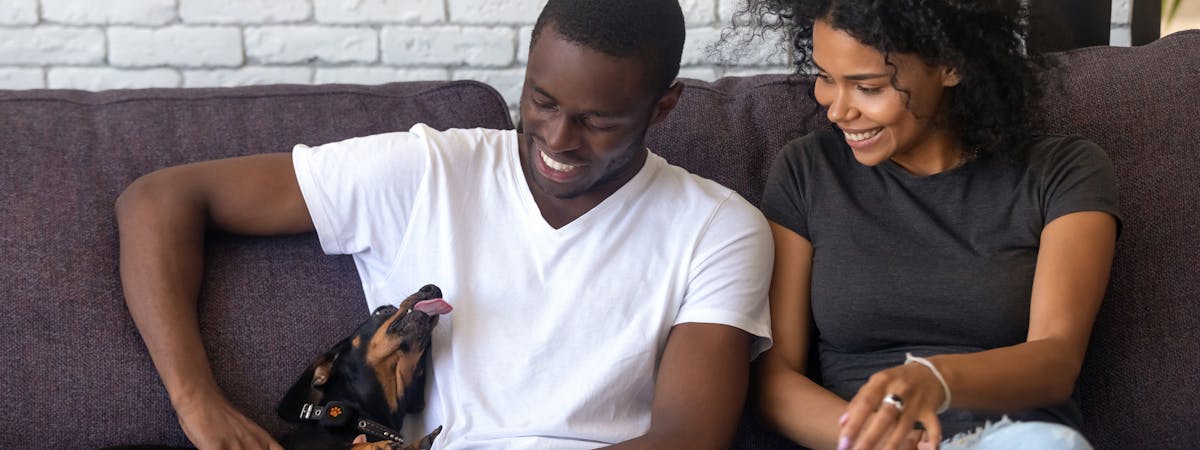Got a dog who knows exactly when they get their walkies, or who brings you their bowl at precisely 5pm every evening? Then you’ve got a dog who loves their routine.
Routines are great for dogs. The predictability means your dog lives a far less stressful life which can have a huge impact on their behaviour.
As life starts to get back to normal, your dog’s routine is going to be disrupted. With a little planning, you can make the change as easy as possible for your pup.
Routines for puppies
Having a clear schedule might be one of the best things you do for your puppy. It’ll help with house training, making sure they get enough rest and with their behaviour. Consider setting regular and consistent times for them to play, eat, sleep, and go to the toilet, from the moment they come home.
As they get older, it makes sense to vary their routine occasionally. This will help them adapt to changes without developing anxiety. You want their day to be structured, but not adhering to a strict routine. You could mix up walks with a vigorous play session, vary their feeding times or leave them alone for longer or shorter periods of time than usual.
Trending posts
Purr-use some of the top blogs our members have been loving this month- Top male dog names for your new furry friendGot a new furry family member in your pack? Check…

- Top female dog names for your new fluffy palWelcoming a new pooch into your family? Explore…

- 250+ gray cat names your silver feline will loveRecently welcomed a fluffy gray bundle of joy into…

- What are normal pet sitting rates?Discover the average pet sitting rates for animals…

- Unique dog names to stand out from the packDare to be different with our list of the best…

Keeping track of routines
Keeping track of your dog’s routine can be tricky if your dog has multiple people looking after them. And whilst we’re sure your pup isn’t complaining about a second breakfast (winning!), they might not be so happy if they’ve not had enough exercise today.
That’s where tools like the PitPat dog activity monitor come in. The small device sits on your dog’s collar and keeps track of what they’ve been up to, such as walking, running, playing, resting, and pottering. That means you’ll be able to see if they need an extra walk or a good long nap after a busy day.
Going on holiday
When you go on holiday without your dog, you want to make sure it causes as little stress for them as possible. When you leave your dog in kennels or at someone else’s home, their routine is usually turned upside down.
That’s why in-home pet sitting can be the best option. Not only does your dog get to stay in their own home, but you can also work with your sitter to ensure their routines are maintained.
When discussing your dog with your sitter, don’t forget to give them information about their routine, such as the times they will normally wake up, when they get food and walkies and more.
This way, your sitter is fully prepared to ensure your dog is relaxed and happy whilst you are away.
Going back to work
If you’re heading back to work as lockdown restrictions are eased, you’ll need to consider how the change in routine will affect your dog. Whether they’re going to be heading to doggy daycare, joining you in the office or staying home alone, you need to make sure their needs are met and that they are relaxed and comfortable.
Start planning as soon as possible and introduce the new routine slowly. You need time to see how they adapt to their new routine and adjust it to suit them.
There will always be unplanned events that mean your dog’s routine needs to change, and that’s completely fine. By helping them adapt to changes whilst keeping a clear structure to their day, you’re setting them up for success.

